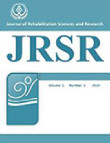The Effect of a Neuromuscular Training Program on Landing Kinematics in Young Soccer Players with Poor Landing Mechanics
This study aimed to investigate the impact of the Prevent Injury and Enhance Performance (PEP) program on knee valgus and knee flexion angles, as well as Landing Error Scoring System (LESS) test scores in young male soccer players with poor landing mechanics. The study identified how increased knee valgus, decreased knee flexion and poor landing patterns contribute as risk factors for these young athletes' anterior cruciate ligament (ACL) injuries.
The present study utilized a quasi-experimental design. A total of 47 soccer players with poor landing mechanics were purposefully recruited and randomly assigned to either the intervention group (n=23 players, age= 12.69±0.70 years, height= 1.53±0.06 m, weight= 49.91±6.76 kg) or the control group (n=24 players, age= 12.55±0.64 years, height= 1.51±0.08 m, weight= 51.25±7.73 kg). The study measured Knee Valgus angle, Knee flexion angle, and LESS test scores at the baseline and the end of the 8-week study period. During the study, the intervention group used the Prevent Injury and Enhanced Performance (PEP) program as a warm-up routine, while the control group continued with their regular warm-up routine. The researchers used ANCOVA (Analysis of Covariance) and paired-sample t-test statistical analyses to evaluate the changes.
the intervention group significantly reduced knee valgus angle (p=0.001). Additionally, there were significant enhancements in knee flexion angle (p=0.003) and the LESS test scores (p=0.001). In contrast, the control group did not show significant improvements in knee valgus and knee flexion angles (p>0.05), except for LESS test scores (p=0.001), where they also demonstrated improvement. Moreover, the study found significant differences between the intervention and control groups in knee valgus angle (p=0.001), knee flexion angle (p=0.025), and LESS test scores (p=0.001).
This study demonstrated that the PEP program effectively reduced dynamic knee valgus angles, increased knee flexion angles, and improved LESS test scores in young male soccer players. Therefore, it appears that this program can reduce the risk of ACL injuries in this population.
Kinematics , Knee , Landing Mechanics , Neuromuscular , soccer , Valgus
- حق عضویت دریافتی صرف حمایت از نشریات عضو و نگهداری، تکمیل و توسعه مگیران میشود.
- پرداخت حق اشتراک و دانلود مقالات اجازه بازنشر آن در سایر رسانههای چاپی و دیجیتال را به کاربر نمیدهد.



